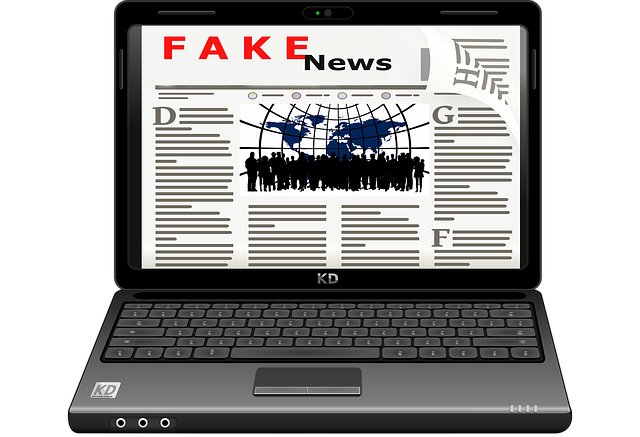 Distribution of fake news and misinformation continues on Twitter, despite the network’s assertion that combatting fake news reports is among its highest priorities. Most of the bot accounts and fake news sites that spread fake news before the 2016 election still thrive on the network, reveals an analysis by the Knight Foundation.
Distribution of fake news and misinformation continues on Twitter, despite the network’s assertion that combatting fake news reports is among its highest priorities. Most of the bot accounts and fake news sites that spread fake news before the 2016 election still thrive on the network, reveals an analysis by the Knight Foundation.
A common perception holds that fighting fake news is like a game of whack-a-mole: Social media networks ban accounts of bots and websites that publish fake news, only to see the misinformation purveyors create new accounts. The research finds that that’s not the case.
More than 80 percent of the accounts that spread false news before the election remained active months later. At the time of the study’s release, they were publishing more than a million tweets in a day. Its study found more than 6.6 million tweets linked to fake and conspiracy news publishers in the month before the 2016 election and 4 million such tweets in a 30-day period early last year. The study that examined 10 million tweets from 700,000 Twitter accounts linked to more than 600 misinformation and conspiracy news outlets is one of the most comprehensive to date.
A Small Number of Sites Dominate Fake News
Another common view holds that fake news and misinformation is pervasive. With online editing tools, almost anyone can make up a news report. But the analysis reveals that a small number of websites dominated fake news promotions during the 2016 election season. Most remain active.
Sixty-five percent of fake and conspiracy news links during the election period went to just the 10 largest sites — a statistic unchanged six months later. Nine of the top 10 fake news sites during the month before the election were still in or near the top 10 six months later. Of the 100 accounts that were most active in spreading fake news before the election, more than 90 were still active in the spring of 2018.
Where’s the Fake News Crack Down?
Twitter asserts that it has deleted millions of accounts and banned unsavory practices such as simultaneous tweets of identical content across multiple accounts in an effort to reign in fake news.
“The persistence of so many easily identified abusive accounts is difficult to square with any effective crackdown,” the research states.
The analysis also found evidence of fake accounts linked to Russia’s Internet Research Agency, but other accounts were probably more important in spreading fake news. Most fake news stories came from supposedly pro-Republican and pro-Donald Trump accounts before the election, a smaller but substantial amount of fake news were passed by liberal or Democratic-identified accounts. After the election period, left-leaning fake news decreased much more than right-leaning fake news.
Like Twitter, Facebook has been accused of allowing Russian-sponsored accounts to spread misinformation on its network. But Facebook is now sees Americans promoting fake news. The company recently said it had found 559 pages and 251 accounts run by Americans, many of which amplified false and misleading content in a coordinated fashion, The New York Times reports.
The company said it would remove the pages and accounts. Among them were Right Wing News, which had more than 3.1 million followers, and left-wing pages that included the Resistance and Reverb Press, which had 240,000 and 816,000 followers.
Case Study Shows How to Limit Fake News
The research contains elements of good news, says Sam Gill, Knight Foundation vice president, communities and impact. The bulk of fake news originates from known points that can be identified and targeted through a combination of computer power and human actions.
One incident indicates how concerted action can significantly curb the spread of misinformation. More than 700,000 tweets in the analysis referenced the Real Strategy, a right-wing website, the second-most linked misinformation site overall. After it was linked to the infamous Pizzagate fake news report, Twitter deleted its account and online forums such as Reddit blacklisted the site. The concerted actions partially disrupted a network of supportive bot accounts. “The example of The Real Strategy may point the way to a human-computer symbiosis, in which we use computing power to sniff out and eliminate sources of misinformation, and then rely on well-informed people to spread the word, blacklist and ignore the worst purveyors of falsehoods,” Gill writes.
In the meantime, organizations can protect themselves from fake news attacks through media monitoring. A media monitoring service can send automated email alerts when a fake news site mentions a company’s name or its products.
Bottom Line: Distribution of fake news and other levels of misinformation continues unabated, despite Twitter’s offensive, new research reveals. The analysis highlights the ongoing need to counter fake news reports. Companies can safeguard their reputations from fake news attacks by remaining vigilant.
William J. Comcowich founded and served as CEO of CyberAlert LLC, the predecessor of Glean.info. He is currently serving as Interim CEO and member of the Board of Directors. Glean.info provides customized media monitoring, media measurement and analytics solutions across all types of traditional and social media.



